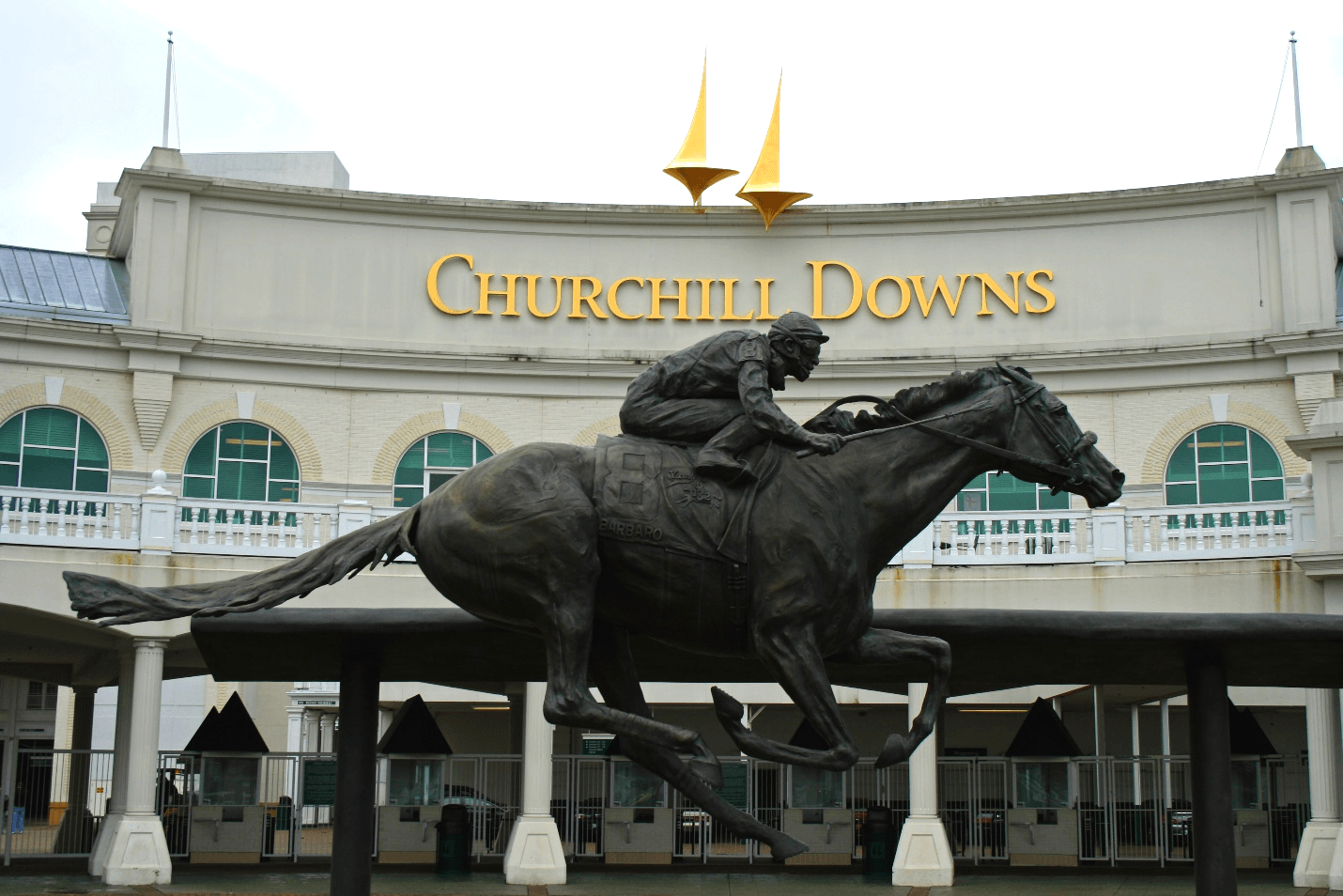
Photo by Kybluegrass of the sculpture of Barbaro, one of the horses who has died in the Kentucky Derby (CC BY-SA 3.0)
Saturday the 3rd of May is Derby Day at Churchill Downs in Louisville. Here come the frivolous cocktails. The pointedly gendered dress code. And one of the crassest annual performances of human domination over the living communities of this planet.
The layers of domination reflected in the spectacle are numerous, and chronically overlooked. In the mix, we find:
The torment of animals for sport. Each year, many hundreds of colts race to their deaths. They run so hard their lungs bleed; diuretics prevent them from breathing out blood. They’re given bisphosphonates that hastily patch up fractures without healing them. Phenylbutazone is used commonly as a pain reliever. Even the horses who escape the fate of running into the ground with compound fractures are running wounded and doped.
A constant role for the killer buyer. As long as breeders exists, so do auctioneers. A trader can bid for the animals in Texas, then sell them into the auction-to-slaughter pipeline. Many thousands of horses—a mix of race and show animals, free-roaming mustangs and former pets—are exported to Canada and Mexico every year, according to agriculture department data. (The EU requires U.S. horses to be held in Canada for six months, to clear their flesh of residual pharmaceuticals—and good luck with that. The details of the holding pens are obscene. Anyone who watches the Derby ought to learn about them.)
The end consumers are mainly in Europe, Japan, China, and Russia. The fate of a sold horse won’t be known to the original seller, but word seeps out, from time to time, about particularly well-known horses going to slaughter. Such was the fate of Ferdinand, who was spectacularly triumphant in the 1986 Kentucky Derby and later “exiled to a breeding farm in Japan”:
“The word shobun, used by owner Yoshikazu Watanabe to describe Ferdinand’s fate, is the Japanese horse industry’s camouflage for saying Ferdy had been killed in a slaughterhouse. So, it may be assumed, America’s 112th Kentucky Derby winner, at age 19, was either consumed as dinner filets by humans—Japanese and Europeans, unlike Americans, eat horse meat—or ground up into pet food.”
The live export of horses to Japan continues.
Disrespect for natural evolution. Even the critics of racing may love seeing horses run. But…isn’t the core of that emotion a yearning to witness freedom? To see untamed horses run? Triple Crown horses exist in an incestuously purpose-bred state. Their delicate legs are often compared with long-stem champagne flutes. They’re bred for speed, then drugged and exploited for money. (That’s a $5 million purse, if they make it to the Kentucky Derby.)
A history of race-based exclusion. Although the first Kentucky Derby winner was Oliver Lewis, a Black jockey who rode Aristides to the finish line in 1875, the Jim Crow era sidelined Black participation. And you’ve really got to dig to find any mentions of the mint julep‘s African-American roots. Or any reminder that Meriwether Lewis Clark Jr. established Churchill Downs on land passed down from Armistead Churchill, who drew wealth from plantation slavery.
Wealth transfers from the workers to the horsey set. As Noah Shachtman has observed, the public is losing interest in horseracing. New York, Pennsylvania, and Kentucky prop up the business with revenue from slot machines, which extract money from those who have the least. Kentucky has one of the highest poverty rates in the United States. Kentucky poverty encompasses the stable workers—typically seasonal migrants who live in dorms, travel in horse trailers, and are lucky if they get minimum wage.
End the Subsidies for Racetracks. End the Breeding. End This Make-Believe Sport.
Today, as Noah Shachtman points out, ownership of a thoroughbred horse can be divided up into shares as small as $15,000. As racing declines, the strategy attracts investors, creating a new “political constituency for billions of dollars in racing subsidies.” So tracks that get state money can keep horses running, running, running—with or without spectators.
Most of us claim to abhor animal abuse. Racetrack realities call our pious claims into question. Truth be told, we humans excel at using other animals, extracting wealth from them, exhausting them, discarding them. Now, for the 151st time, the Kentucky Derby will showcase our arrogance and pretend it’s an elegant sport. The opposite is true. Make it stop.
The post The Multilayered Inhumanity of the Kentucky Derby appeared first on CounterPunch.org.
This post was originally published on CounterPunch.org.